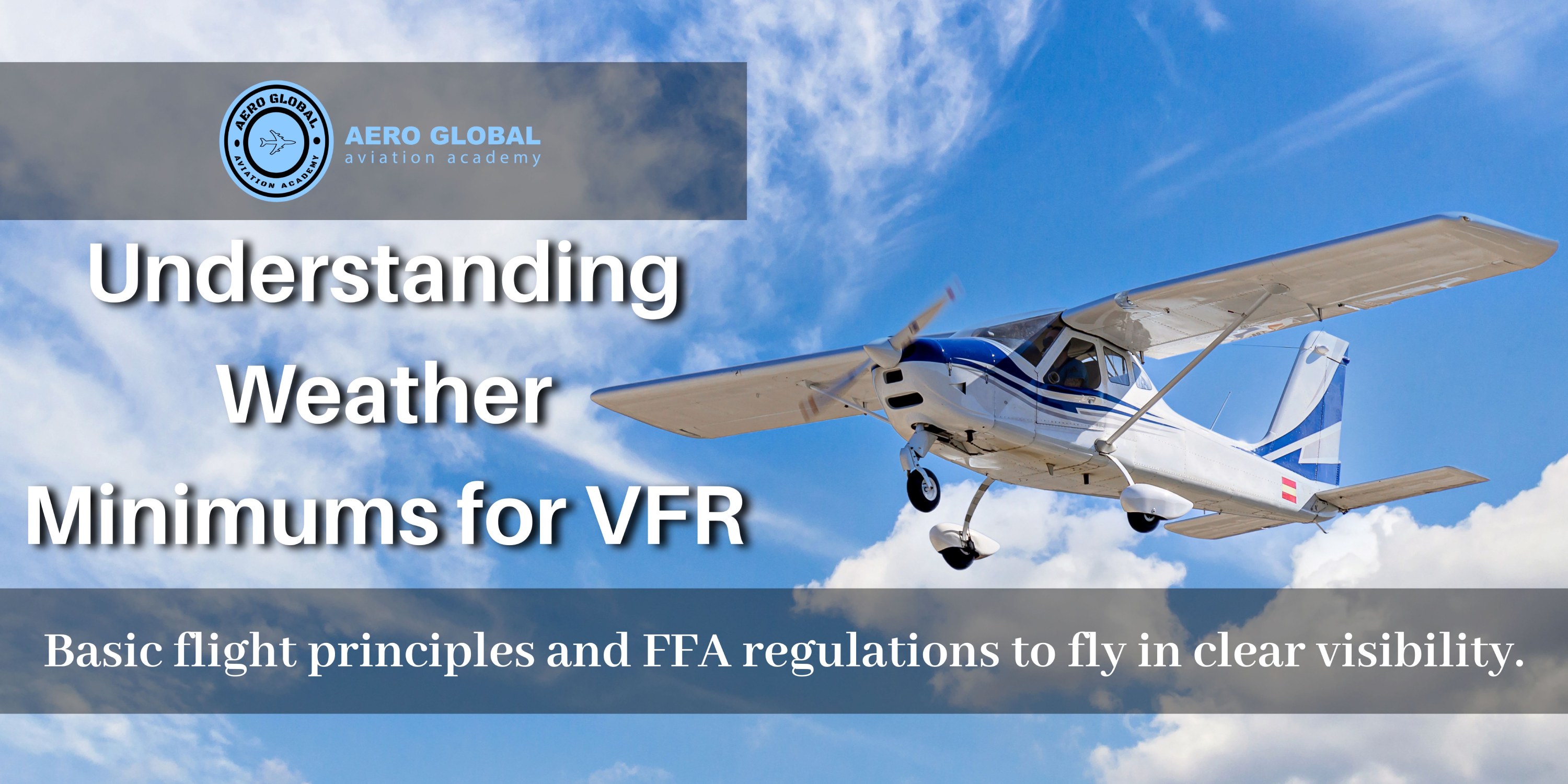4009 Fifth St,
Suite 103, Kissimmee, FL 34741
321-270-9900

Weather plays a critical role in every flight, and as a student pilot, understanding weather minimums isn’t just a matter of passing your checkride — it’s a matter of safety. At Aero Global Aviation Academy, we emphasize the importance of making smart, weather-informed decisions from day one.
Let’s break down what weather minimums are, how they affect your flying privileges, and why respecting them can make you a safer, more confident pilot.
Weather minimums are the minimum visibility and cloud clearance requirements established by the Federal Aviation Administration (FAA) for flying under Visual Flight Rules (VFR).
These rules ensure that pilots have enough visibility to maintain separation from terrain, obstacles, and other aircraft — without relying solely on instruments.
Here’s a simplified breakdown for student pilots flying in airspaces below 10,000 feet MSL:
Full breakdown: FAA Weather Minimums Chart (AIM Section 3-1-4)
Weather minimums are not arbitrary. They are designed to ensure that you have adequate time to see and avoid obstacles, terrain, and other aircraft. As a student pilot:
Never hesitate to ask:
We’re here to build judgment, not just hours.
Flying in good weather is one of the joys of aviation — and respecting weather minimums ensures you keep flying safely for years to come. At Aero Global Aviation Academy, we don’t just train you to meet the minimum; we train you to fly with confidence, clarity, and caution.
Want to learn how to make real-time weather decisions? Schedule a lesson or book a discovery flight with one of our experienced instructors today.